We’re all looking for value in wine, right? Here’s a link to Wine Enthusiast‘s Top 100 Best Buys of 2020. They include reds and whites from around the world, and are all under $15 per bottle.
Top of page: https://winervana.com/blog/

A wine buying guide for the curious wine enthusiast.
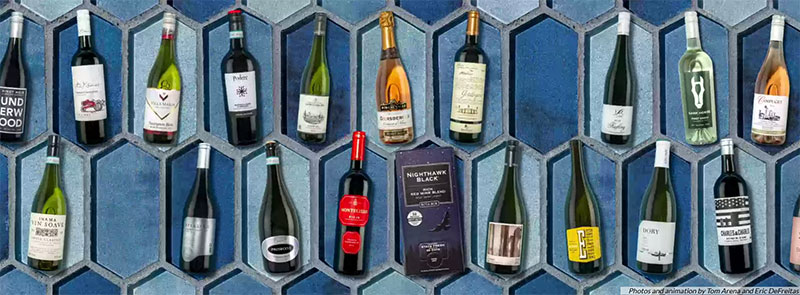
We’re all looking for value in wine, right? Here’s a link to Wine Enthusiast‘s Top 100 Best Buys of 2020. They include reds and whites from around the world, and are all under $15 per bottle.
Top of page: https://winervana.com/blog/
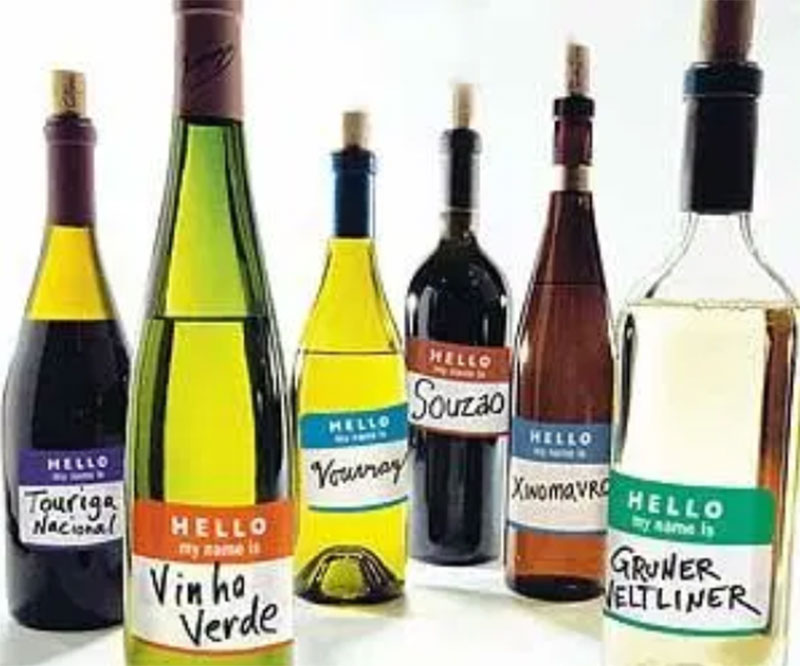
Looking for something completely different? Here are some grape varieties and wines from around the world to consider to really shake up your drinking experience.
Charbono is a relatively obscure French variety, but today it is much more widely grown in Argentina, as well as Napa Valley. It is often mistaken for the more common Dolcetto grape, though genetic testing has proven that they are not related. This grape produces a dark wine that is high in both tannins and acidity.
Austria offers Gruner Veltliner, its most widely-planted varietal. Gruner’s naturally high acidity makes it one of the world’s best food wines, especially with spicy cuisine. It can be light and easy, or with lower yields and higher ripeness, it can burst with aromas of white flower and flavors of grapefruit, herbs, mineral, and fresh-ground white pepper. .
The Austrian red varietal Blaufränkisch has characteristics of both Pinot Noir and Syrah. (And it is sometimes incorrectly thought to be the same variety as Gamay.) The wines it produces are lighter-styled reds, usually with plenty of acidity. It is grown in Germany, as well, where it is usually called Lemberger.
Gewürztraminer is thought to have originated in Italy’s Alto Adige region, but is now mostly famously grown in Alsace, located between France and Germany. It is planted throughout other nations in Europe, as well as California, Oregon, Washington, and New Zealand. These highly fragrant and crisp wines have flavors of spices such as clove, nutmeg, and lychee. You should drink a Gewürztraminer when young; they won’t last past five years.
Picpoul is normally grown in the Languedoc-Roussillon region of France, but is also sometimes grown in Spain. It is notable for its strikingly high acidity. One reason this grape isn’t as well known as others is because it is much more likely to develop a certain kind of fungus, making it more difficult to grow. There are three varieties of Picpoul: Picpoul Noir, Picpoul Gris, and the most well-known variety, Picpoul Blanc. Piquepoul Blanc is used both for blending and for varietal wines. Red wines produced from Picpoul Noir are high in alcohol, are richly scented, but have a very pale color, which has made the variety more popular as a blending ingredient than as a producer of varietal wines.
Valdiguié also hails from the Languedoc-Roussillon region. In the 1980s, this grape experienced a boom in Napa Valley, but poor cultivation and problems with disease quickly ended that. However, recently some intrepid wine makers in the United States have been trying to save Valdiguié’s tarnished reputation. When properly cultivated and prepared, Valdiguié is a unique wine, one with distinct fruity notes and a sweet-and-sour flavor profile, with a notably low alcohol conent.
Vouvray is the largest white wine appellation of the Anjou-Saumur-Touraine region of the Loire Valley, known for its siliceous-clay and limestone-clay soils and cool climate. The wine is made from the Chenin Blanc grape, grown in the region since the fourth century. It is capable of both dry wines and elegant sparklers. In years when botrytis cinerea, the mold responsible for sweet whites, hits, harvest is delayed in order to pick the grapes at their peak ripeness to produce a rich dessert wine.
Grown in Georgia (the country, not the state) the white varietal Rkatsiteli can drink like a Pinot Grigio. It’s also popping up in wines from New York’s Finger Lakes region, having been adopted and planted by the Dr. Konstantin Frank Winery there.
Mtsvane is like Sauvignon Blanc, but without the grassy notes that I find to be off-putting.
Kisi has been described as something between Chenin Blanc and Viognier on steroids.
Finally, Georgia’s Tavkveri is a workhorse, and the best examples are often vinified as light red wines (ala Beaujolais), with similar tangy, red-fruited, bright, and zesty characteristics.
Assyrtiko hails from the island of Santorini, where the volcanic soil produces juicy wines with good body and high acidity, great with South Asian food.
Malagousia is a rare variety grown mainly in Macedonia, with flavors of white peaches spritzed with jasmine.
Moschofilero, a pink/gray-skinned grape grown in central Peloponnese, has vibrant citrus acidity, attractive aromatics such as exotic spice and violet, and is often made as a Rosé.
Kourtaki Retsina of Attiki, the wine I like to call “The Greek Wine Even Greeks Won’t Drink.” The traditional grape for Retsina is Savatiano with Assyrtiko and Rhoditis sometimes blended in. Retsina is made like other white wines, but with the addition of small pieces of Aleppo pine resin being added during fermentation. It is this pine resin that gives Retsina its name, as well as its unique flavor profile. Read more about it here.
From Macedonia comes Xinomavro, Greece’s premier red grape, which typically shows characteristics of red fruit, sun-dried tomatoes, kalamata olives, and spices.
Egri Bikaver (”Bull’s Blood of Eger”), is a vintage-dated red wine that is made mainly from the Kadarka grape. I’ve been drinking it for decades, and it is relatively widely available, but aside from Hungarians it seems as almost no one knows about it.
Sicily’s white Carricante is likened to cool-climate Chardonnays, and the red Nerello Mascalese, with its earthy, herbaceous, yet muscular notes echoes some of the wines of Burgundy.
Verdicchio is a white wine grape grown mainly in the Marches region. The wines made from it have a subtle greenish hue, are generally crisp and dry, and have a light but elegant aroma and flavors of minerals and lemon. Verdicchio traditionally comes in a green, two-handled urn-shaped bottle called an amphora.
Grapes such as Souzao and Touriga Nacional, traditionally used to make Port, can make a classic table wine, too, that tends to be juicy and unpretentious. They are drink-me-now wines, particularly those from Douro, which stretches across north-central Spain and Portugal.
Vinho Verde comes from Portugal’s largest designated growing region. The wines made from it are slightly effervescent, can be red or white, are fresh and fruity and are meant to be drunk while still young.
South Africa is famous for its Pinotage, but it’s an enthusiasm I don’t share. It was cultivated there in 1925 as a cross between Pinot Noir and Cinsaut. It typically produces deep red wines with flavors of smoke, bramble, and earth, sometimes with notes of bananas and tropical fruit.
Emerging recently is a new category called orange wine. While Rosé is made from red grapes with a little grape skin contact to impart a small amount of color, orange wine is made from white grapes with extended skin contact creating anywhere from a peach to orange to amber color. So, since orange wine is a “white wine” made in the style of a red, there is at least the potential for plenty of flavor.
Ice wine is a type of dessert wine produced from grapes that have frozen while still on the vine. The sugars and other dissolved solids do not freeze, but the water does, and this makes for a more concentrated juice, which is then pressed from the still-frozen grapes in unheated wineries. This is then fermented, resulting in a small amount of highly concentrated, very sweet wine with high acidity.
Ice wine production is risky (the frost may not come at all before the grapes rot or are otherwise lost) and requires the availability of a large enough labor force to pick the whole crop within a few hours, at a moment’s notice, on the first morning that is cold enough. This low yield both in the field and in the winery makes them generally expensive. Canada is the largest producer, followed by Germany. There are also ice wine producers in the Niagara region of New York.
The Rapazzini Winery of Gilroy, California, “Garlic Capital of the World,” makes four garlic-infused wines, two reds and two whites. British wine expert Oz Clarke once braved one of the garlic white wines, describing it as an “unholy alliance of flavors.” Not a fan, apparently.
Winemaker Ian Hutcheon runs Tremonte Vineyard in Chile, as well as an astronomy center there. He has played off of that theme for a number of his wines. He has installed a “wave room” at his observatory which captures cosmic power from outer space that is then converted into audio. He claims that these sound waves trigger a structural molecular change in the wine stored in bottles and black oak barrels in the room. “The sound is eerie, and tourists state that they feel goose-pimples and even energized as they sip their cosmic wines while huge images of Galileo, Newton, and Einstein observe them from the dark,” said Hutcheon.
In 2012, Hutcheon produced Sacrificio wine, a blend of Cabernet Sauvignon, Carmenere, and Syrah aged in French oak barrels for 12 months. These were then buried at the summit of Mount Tunca (in Australia, a long way to send the wine) and left to the elements for an entire winter. Tourists wanting to try the Sacrficio wine had to climb the mountain and locate the wine using a map.
Also in 2012, Hutcheon produced a Cabernet Sauvignon wine called Meteorito, which was aged with a chunk of a 4.5-billion-year-old meteorite placed into the barrel. “The meteorite used in the creation of this wine came from the Asteroid Belt between Mars and Jupiter,” he explained. “And the idea behind submerging it in wine was to give everybody the opportunity to touch something from space, an extra-terrestrial rock, the very history of the solar system, and feel it via a grand wine.” Ahem.
In western Massachusetts, Vermont, Nova Scotia, and other spots in North America’s “maple belt,” farmers sometimes blend grape wines with maple syrup or ferment straight-up maple sap. The sweet result works well as a dessert wine.
And, there are wines that aren’t made from grapes at all. If something has sugar in it, you can get alcohol out of it, and you can bet that someone has, or will, try that.
If some pumpkin-spiced booze appeals to you, California Fruit Wine Co. adds pumpkin-pie spices to fermented pumpkin juice, creating a semi-sweet, fall-flavored beverage. Very big with Harry Potter fans, apparently.
Omerto, made in Quebec, Canada, relies on a secret family recipe for a pale-gold wine made from heirloom tomatoes. Winemaker Pascal Miche produces dry and sweet versions of this aperitif wine, comparing them to Sauvignon Blanc and white port. Unfortunately, you’ll have to go to Canada, Belgium, France, or Monaco to get it. The Florida Orange Groves Winery makes a spicier tomato wine, spiked with hot peppers.
Schnebly Redland’s Winery in Florida makes a wine from avocados. They peel and pit the fruit, then blend the flesh with water, sugar, and yeast before fermentation in stainless-steel vats. In addition to both dry and sweet all-avocado wines, they turn out blends made with coconut and guava.
How about wine made from grapefruit juice? Look to Florida once again, where juice from the state’s famous pink grapefruit gets aged for several months after fermentation to mellow its tart edge. I couldn’t find a commercial producer, but there are a number of DIY recipes on the Interwebs.
If you’re a fan of tropical-fruit aromas in your Chardonnay or Riesling, you could plunge into an all-mango wine. Several southern Florida wineries, as well as Island Mana on Kauai, Hawaii, make this sweet tipple.
And finally, North Dakota’s Maple River Winery makes a hard-to-find semi-sweet pink wine. It does not contain any grapes or grape juice, but is made with white and lavender lilac flowers, water, sugar, yeast, and “adjuncts” according to the producer. Whatever “adjuncts” are.
See, I told you this would be something completely different.
Return to blog posts: https://winervana.com/blog/
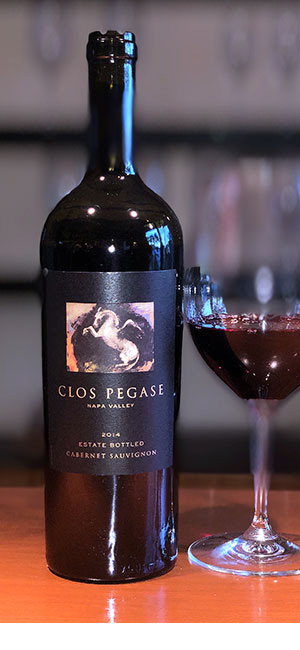
Disclaimer: I’ve been a member of the Clos Pegase wine club for years, so this post is hardly impartial.
Clos Pegase was founded by Jan Shrem in 1983 on a 50-acre vineyard near Calistoga in Napa Valley. He was born in Colombia in 1930 to Jewish-Lebanese parents, and spent his childhood in Jerusalem and his early adolescence back in Colombia. After he arrived in the United States at age 16, he attended the University of Utah and UCLA. While in college, he sold encyclopedias.
A romance with a Japanese woman named Mitsuko led him to Japan, where they were married in 1960. They stayed 13 years, and during that time Shrem established a book distribution company that sold English-language encyclopedias, and books on engineering and art. His company also published translations of books into Japanese. By the time Shrem sold this operation, it had 50 offices and 2,000 salespeople. Continue reading “Clos Pegase Cabernet Sauvignon 2014”
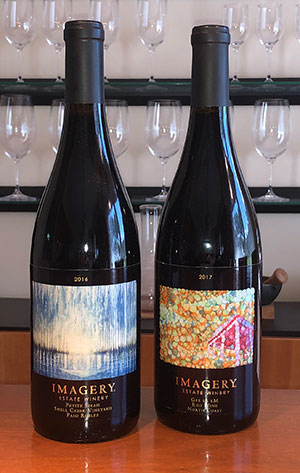 My first career paths as a young man were art and architecture. I have a Bachelor’s degree in architecture, and got half way through a Master’s in fine-art printmaking. I ended up traveling neither of those avenues professionally, but have remained keenly interested in both ever since. So, I was intrigued to learn of Imagery Estates’ commitment to fine art.
My first career paths as a young man were art and architecture. I have a Bachelor’s degree in architecture, and got half way through a Master’s in fine-art printmaking. I ended up traveling neither of those avenues professionally, but have remained keenly interested in both ever since. So, I was intrigued to learn of Imagery Estates’ commitment to fine art.
In 1973, newlyweds Mike and Mary Benziger drove west and permanently settled in Northern California. Seven years later, Mike and and his brother Bruno Benziger purchased the historic Wegener Ranch on Sonoma Mountain in Glen Ellen, California. Hearing the Sirens’ call of the Golden State, over the next six years the four remaining siblings — Bob, Joe, Jerry, and Patsy, with their spouses — made their way to California.
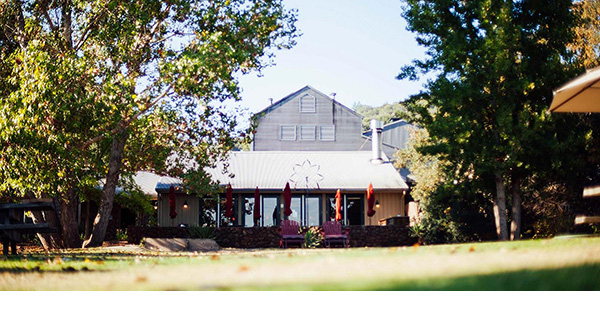
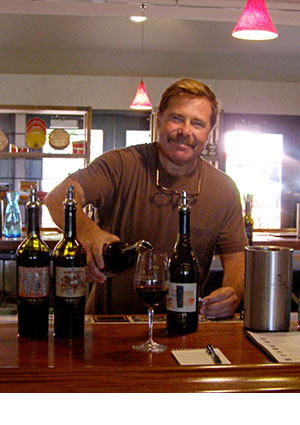 Joe Benziger
Joe Benziger
In 1986, winemaker Joe Benziger first partnered with artist Bob Nugent to launch the Imagery Series of wines in a converted brewery. This pairing of wine and art continues to this day, and permeates every aspect of Imagery Winery, including unique artwork replicated on every label. The winery’s dedicated on-site art gallery features 500 works from over 300 notable contemporary artists. Usually, between 60 and 150 pieces are on view in the gallery at any one time. Contributing artists have been selected from around the world, including: Sol LeWitt of Connecticut, Shoichi Ida of Japan, William Wiley of California, Goncalo Ivo of Brazil, David Nash of Wales, and Judy Pfaff, Pat Steir, and Terry Winters of New York. The artists are specially commissioned by Imagery to create a new and original piece; unsolicited submissions from others are not considered. At any given time, as many as 35 artists are working on pieces that will appear on future Imagery wine labels. Of the 200 or so artists reviewed each year, only five are actually offered a commission. The artists are not limited by size, medium, or content, except for one requirement. It can be either representational or abstract, but every image must include the Benziger Estate‘s “Parthenon.” it was on the property when the Benzigers first arrived and overlooks the rolling vineyards.
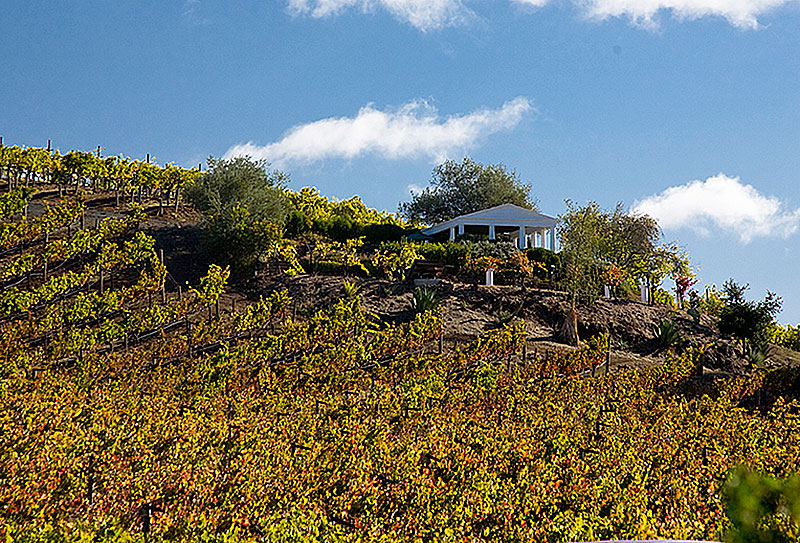
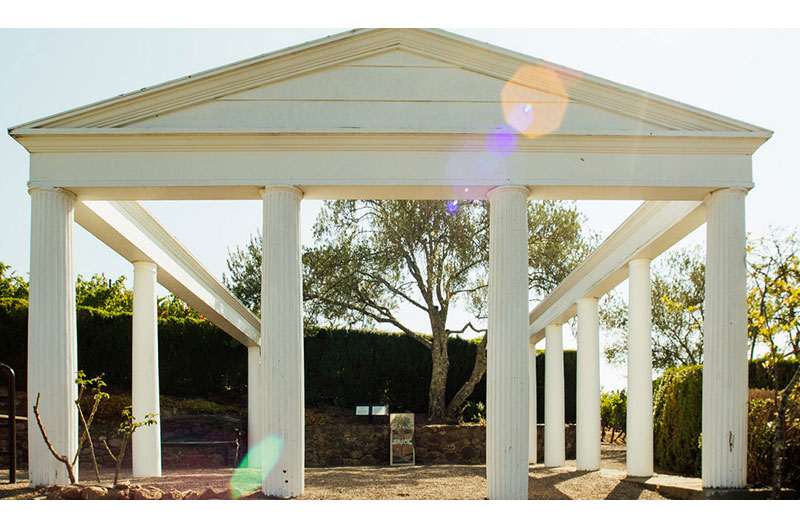
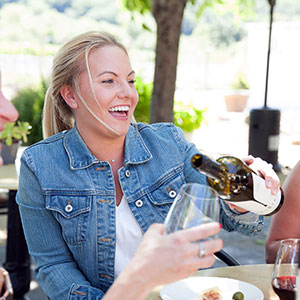 In December 2017, Joe Benziger retired, and his daughter Jamie took over as second-generation winemaker. She was named the 2019 Best Woman Winemaker in the International Women’s Wine Competition, and was also included on Wine Enthusiast’s list of 40 Under 40 Tastemakers.
In December 2017, Joe Benziger retired, and his daughter Jamie took over as second-generation winemaker. She was named the 2019 Best Woman Winemaker in the International Women’s Wine Competition, and was also included on Wine Enthusiast’s list of 40 Under 40 Tastemakers.
Although she studied marketing at Loyola Marymount University, Jamie eventually came to realize she wanted the family wine business to be her future after all. Jamie transferred to Sonoma State University to complete her marketing degree, and added wine business to her studies. She interned in marketing with Gundlach Bundschu Winery during school, but while working her first harvest at Benziger Jamie realized her heart was really in winemaking.
Since then, Jamie has aggressively pursued her knowledge of wine, working in the wine labs at St. Francis and Bogle, traveling to New Zealand to work harvest at Villa Maria, and getting her hands dirty in the field at Enterprise Vineyards. Mentored by her father and just as adventurous, Jamie says she is, “passionate about taking Imagery to a broader audience.”
The origins of Petite Sirah (aka Petite Syrah) have been shrouded in mystery and confusion. It was originally thought to be related to the renowned Syrah of France’s Rhône region. Then it was decided it was actually Durif, a minor Rhône varietal now nearly extinct. But then along came pesky science, and a DNA analysis in the late 1990s identified the grape as a cross between Syrah and Peloursin. It is grown much more extensively in California than France, but can also be found in Argentina, Brazil, and Mexico. Somewhat disparaged at the turn of this century, it is now enjoying a renewed popularity.
Petit Sirah can make big, full-bodied wines, and this selection is an excellent example. Imagery likes to call this a “toothbrush wine” because of its deep color and bold flavor (although dentists caution against brushing your teeth soon after drinking wine, as the lingering acidity can damage tooth enamel by doing so.)
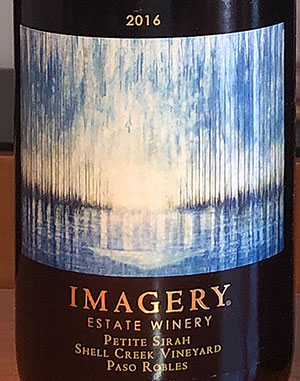 The label artist is Robin Denevan of San Francisco, California. The image is part of Denevan’s River Series, and is an encaustic painting, a mixed media technique that involves using heated beeswax to which colored pigments have been added. The liquid/paste is then applied to a surface — usually prepared wood, although canvas and other materials are also used. The term is derived from Greek, meaning a burning in. A subtle reflection of the “Parthenon” is shown in the water in the bottom third of the picture.
The label artist is Robin Denevan of San Francisco, California. The image is part of Denevan’s River Series, and is an encaustic painting, a mixed media technique that involves using heated beeswax to which colored pigments have been added. The liquid/paste is then applied to a surface — usually prepared wood, although canvas and other materials are also used. The term is derived from Greek, meaning a burning in. A subtle reflection of the “Parthenon” is shown in the water in the bottom third of the picture.This too-cutely named (for my taste anyway) blend is made from 35% Grenache, 35% Syrah, and 30% Mourvèdre sourced from a number of North Coast vineyards. GSM, as it’s more commonly referred to, is a mix traditionally produced in the Côtes du Rhône region. It is also a favorite of the so-called “Rhône Rangers,” a group of American winemakers who promote the production of wines containing at least 75% of the 22 Rhône grape varieties. This is Jamie Benziger’s first solo effort.
Dark garnet in the glass, this wine starts with aromas of figs and roast plums and a bit of vanilla. These are followed by flavors of strawberries and tart cherries. There is just the right amount of acidity, and the soft tannins are restrained. The silky structure all wraps up in a nice long finish. The ABV is 14.9%, and 558 cases were produced.
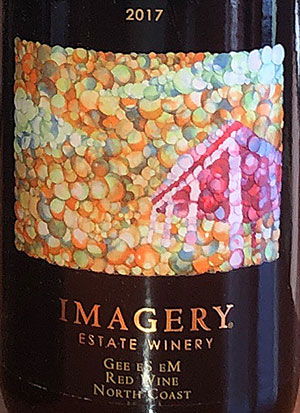 The art adorning this bottle is by Santa Rosa artist Sami Lange. It is one of her paper collage “quilts” that are created by hand cutting, dying, and stitching thousands of circles to create intricate meditative patterns. The fuchsia “Parthenon” arises from a field of orange.
The art adorning this bottle is by Santa Rosa artist Sami Lange. It is one of her paper collage “quilts” that are created by hand cutting, dying, and stitching thousands of circles to create intricate meditative patterns. The fuchsia “Parthenon” arises from a field of orange.
https://www.samilangeart.com/
Return to blog posts: https://winervana.com/blog/